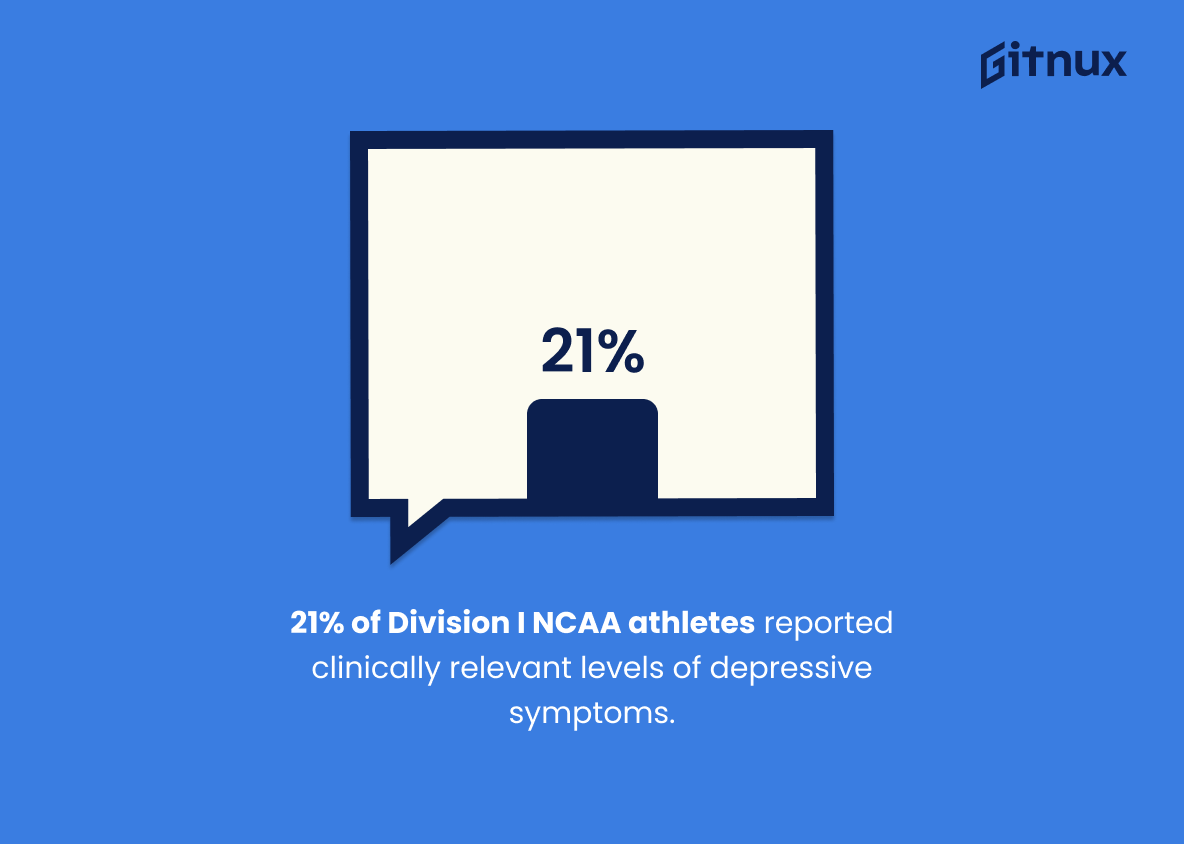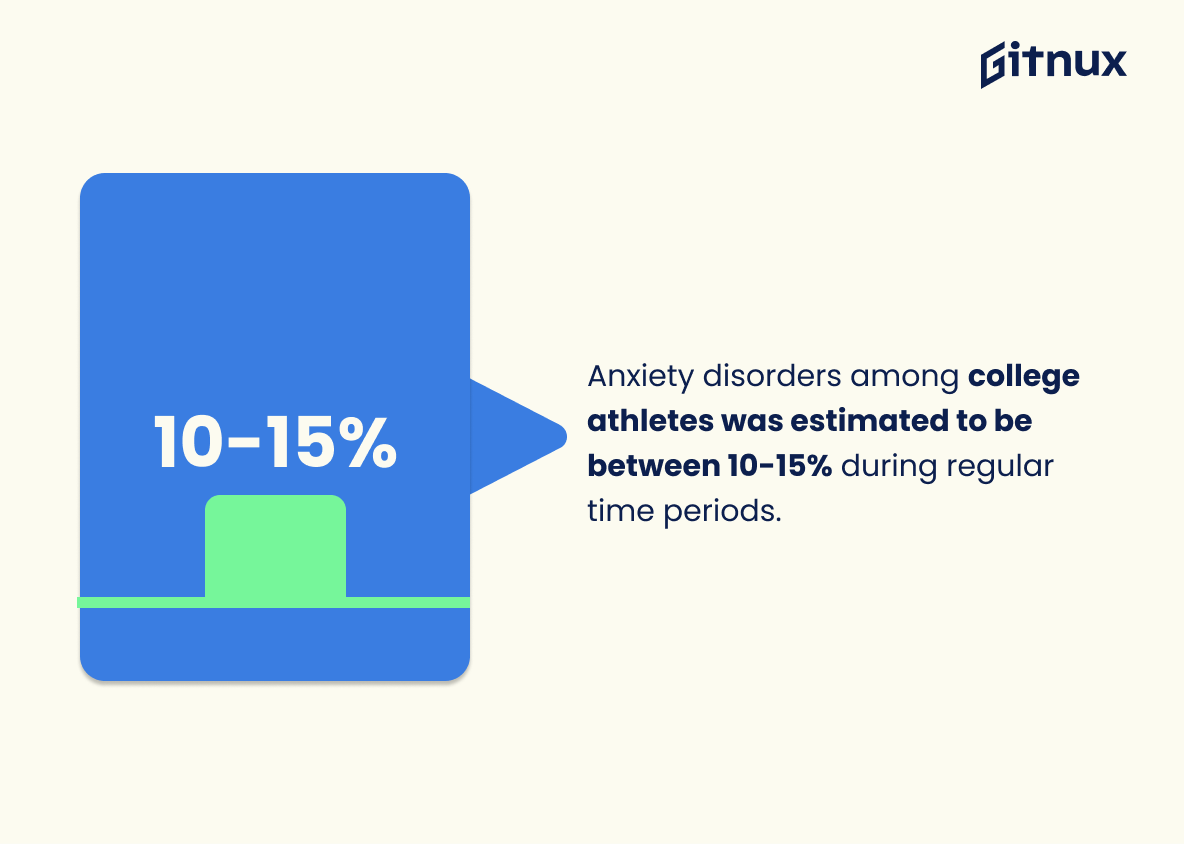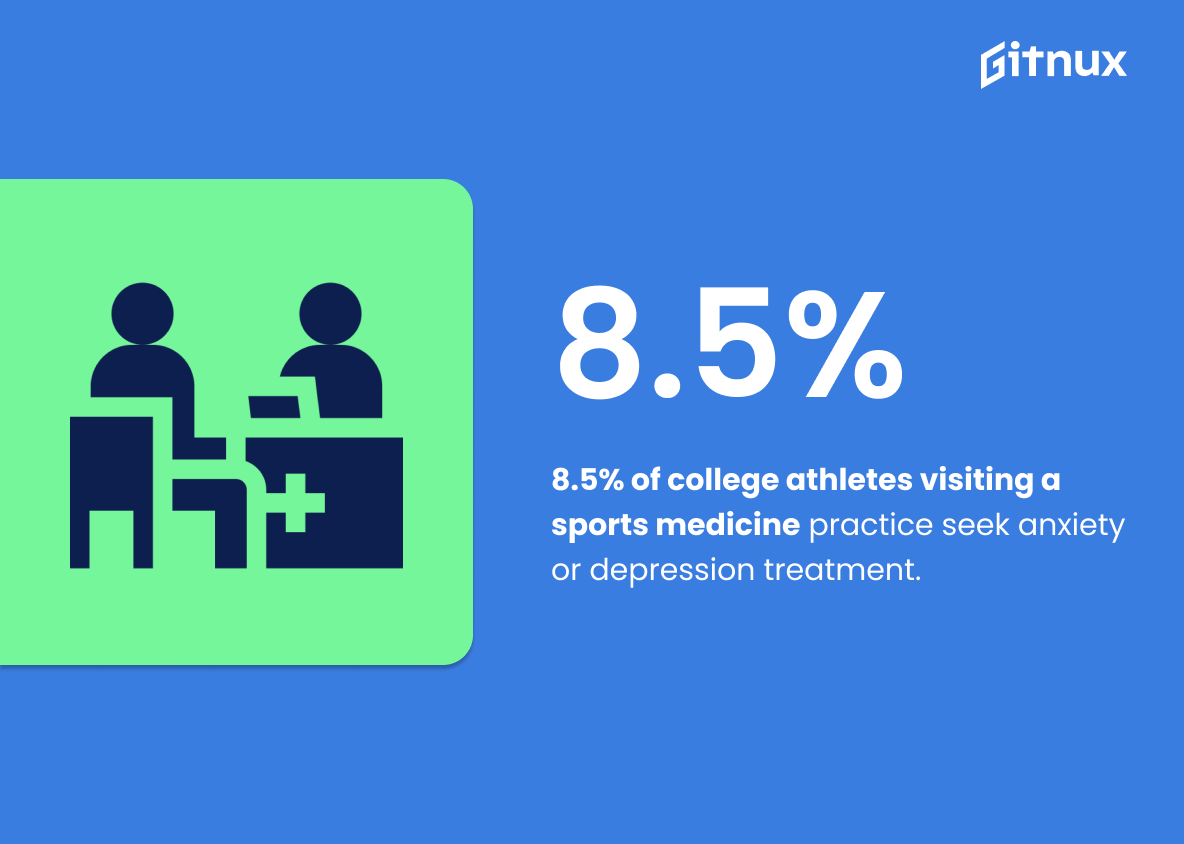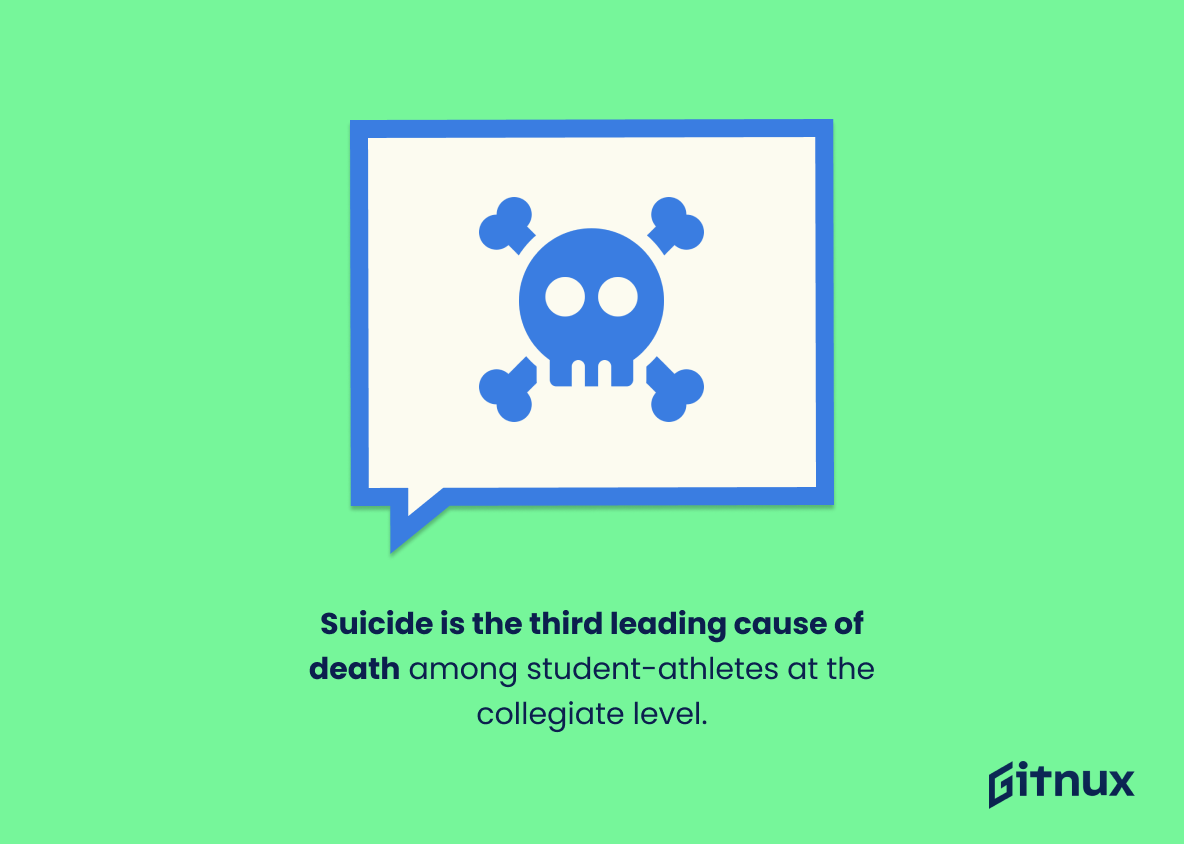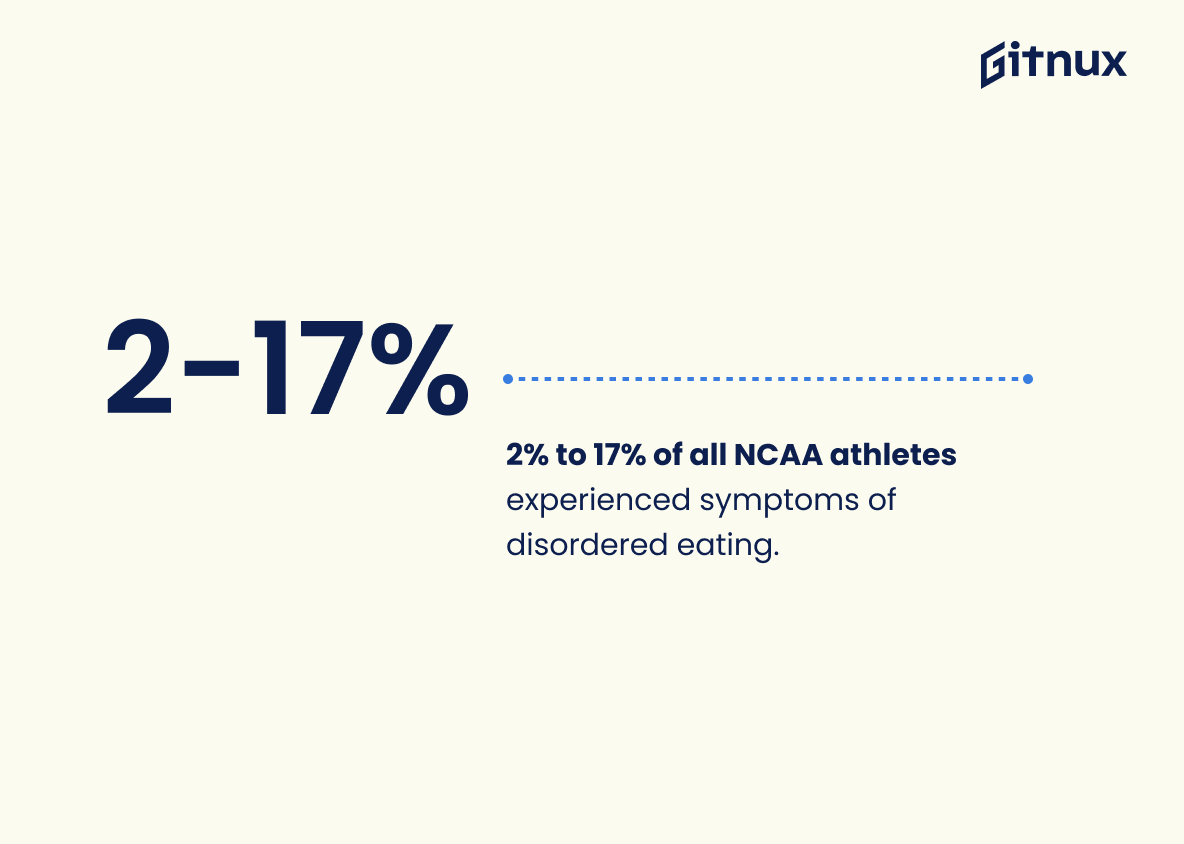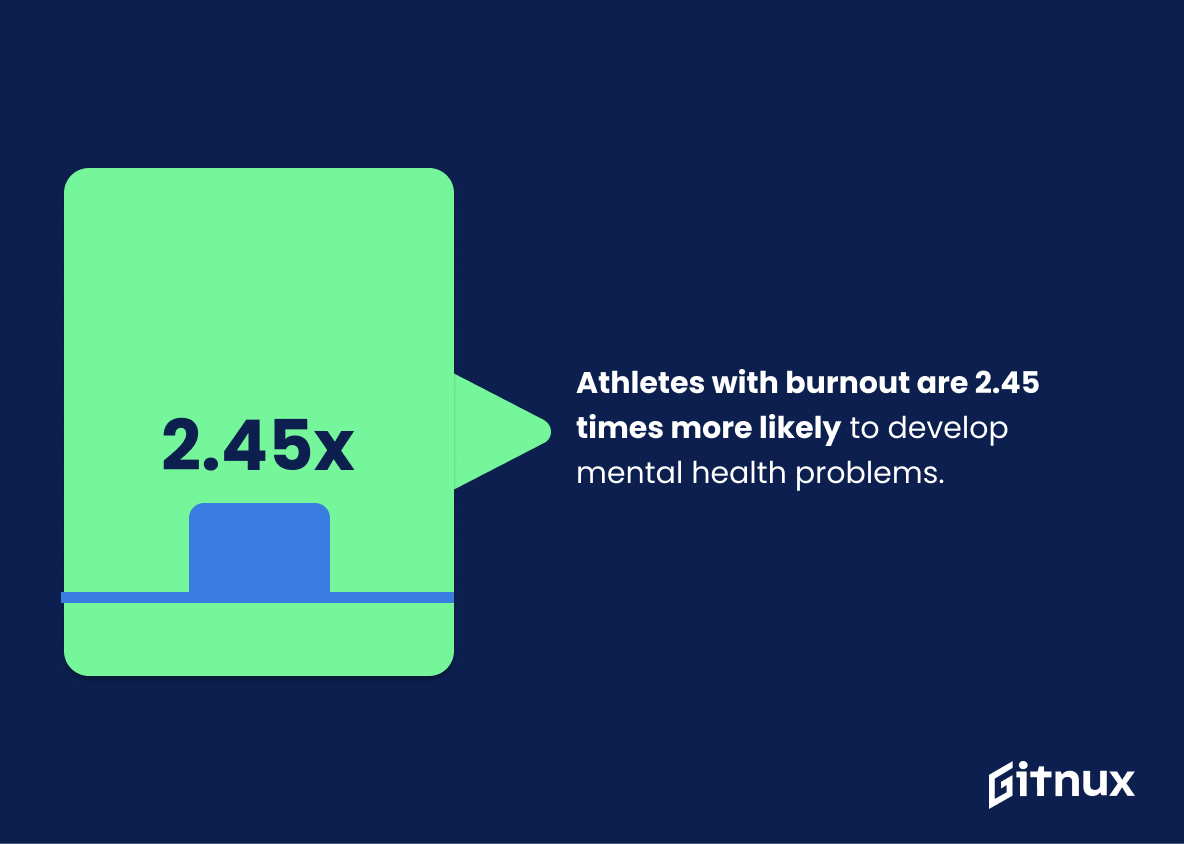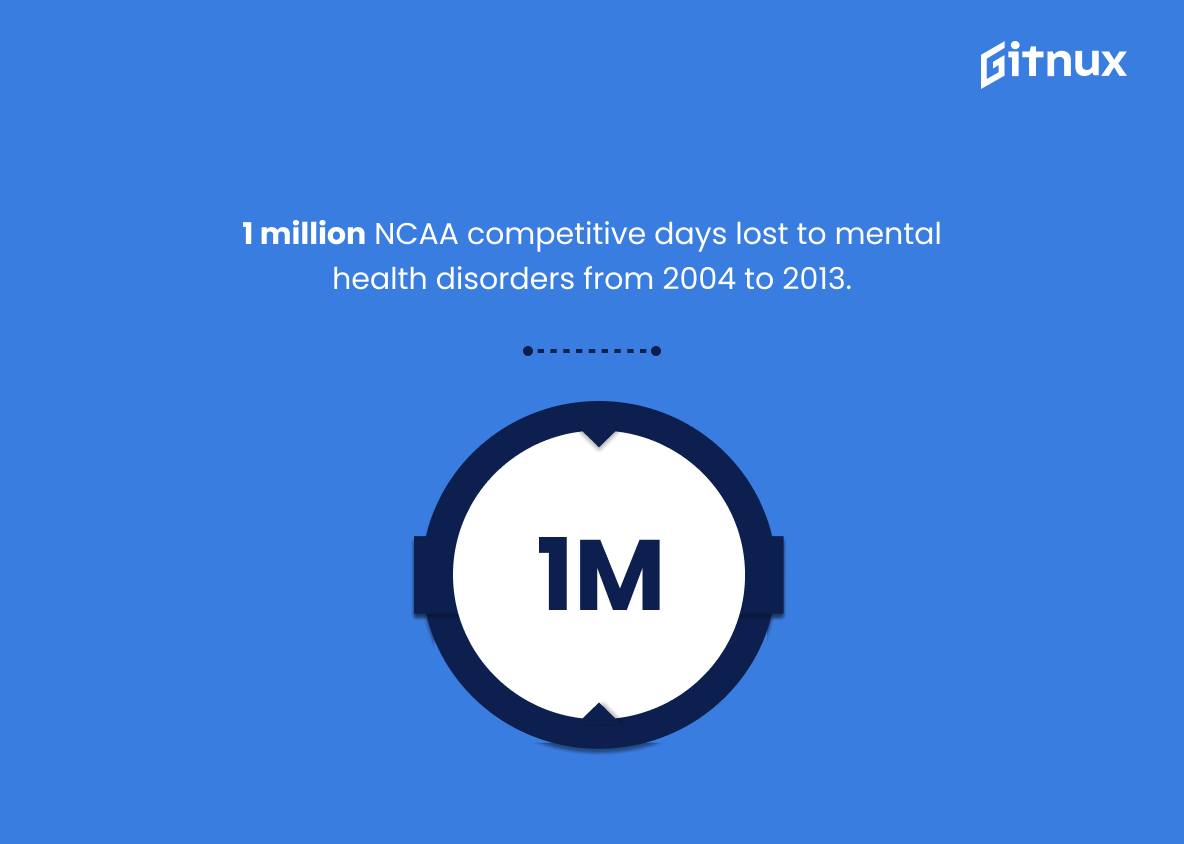Mental health is an important issue for college athletes, and the statistics surrounding it are concerning. Recent studies have found that approximately 24% of collegiate athletes self-reported symptoms of anxiety or depression, while nearly 25% reported feeling “inabilities to be as successful as they would like in certain situations due to their mental health.” In a recent survey, 30% of college student-athletes experienced a mental health care need in the last 12 months. Research indicates that student-athletes are roughly 2 to 3 times more likely to develop symptoms of depression compared to non-athletes in college. A study also found that female student-athletes had a 3.28 times greater likelihood of experiencing clinically significant depression than male student-athletes. Additionally, 21% of Division I NCAA athletes reported clinically relevant levels of depressive symptoms according to one study; 54% said they were open talking about mental health with professionals; and 25%, sought out counseling services or other forms help related specifically towards their mental wellbeing during 2019 alone.
The effects can even extend beyond just feelings: research has shown that those who sustain concussions may be at higher risk for developing depression (3x) and retired students experience lower rates (26%) when compared against current ones – indicating how much stressors from competition can take its toll on individuals’ psychological states over time if not addressed properly early on.. Furthermore, 14 percent admitted having signs associated with clinical level depressions during COVID pandemic period whereas 32 percent felt stressed academically due disordered eating habits which ranged between 10%-15%. Lastly suicide was identified as third leading cause death among these group members along burnout being linked increased risks subsequent issues by factor two point four five . All this combined resulted 1 million fifteen thousand competitive days lost 2004 through 2013 solely attributed poor management conditions regarding athlete’s physical/mental well beings . It’s clear there needs further attention given this topic so we better understand what steps should taken order ensure our future generations remain healthy both physically mentally throughout duration athletic careers university settings alike
College Athlete Mental Health Statistics Overview
A study found that female student-athletes had a 3.28 times greater likelihood of experiencing clinically significant depression than male student-athletes.
This statistic is a stark reminder of the mental health disparities that exist between male and female student-athletes. It highlights the need for increased awareness and support for female student-athletes, who are more likely to experience depression and other mental health issues. It also serves as a call to action for universities and athletic departments to take steps to ensure that female student-athletes have access to the resources they need to maintain their mental health.
According to a study, 21% of Division I NCAA athletes reported clinically relevant levels of depressive symptoms.
This statistic is a stark reminder of the mental health struggles that college athletes face. It highlights the need for increased awareness and support for college athletes, as well as the need for more research into the mental health of college athletes. It is a call to action for universities, coaches, and athletes to take mental health seriously and to ensure that athletes have access to the resources they need to stay healthy and successful.
A survey found that 54% of college athletes reported that they were open to talking to a mental health professional.
This statistic is a powerful indicator of the progress being made in the area of college athlete mental health. It shows that a majority of college athletes are willing to seek help and support from mental health professionals, which is a positive sign that more athletes are becoming aware of the importance of mental health and taking steps to address it. This statistic is a testament to the work being done to raise awareness and provide resources to college athletes, and it is a hopeful sign that more athletes will be able to access the help they need.
The prevalence of anxiety disorders among college athletes was estimated to be between 10-15% during regular time periods.
This statistic is a stark reminder of the prevalence of anxiety disorders among college athletes, highlighting the need for greater awareness and support for mental health in this population. It is a call to action for universities, coaches, and athletes to prioritize mental health and ensure that athletes have access to the resources they need to manage their anxiety.
In a study, over 34% of college athletes experienced decreased sleep quality during their competitive season.
This statistic is a stark reminder of the toll that college athletics can take on an athlete’s mental health. It highlights the fact that many college athletes are struggling to get enough quality sleep during their competitive season, which can have a significant impact on their overall wellbeing. This statistic is an important reminder that college athletes need to be supported and given the resources they need to ensure they are getting the rest they need to stay healthy and perform at their best.
Among college athletes who visited a primary care sports medicine practice, 8.5% were seeking treatment for anxiety or depression.
This statistic is a stark reminder of the prevalence of mental health issues among college athletes. It highlights the need for increased awareness and support for college athletes who are struggling with anxiety and depression. It also serves as a call to action for college sports programs to prioritize mental health and provide resources to help athletes manage their mental health.
Suicide is the third leading cause of death among student-athletes at the collegiate level.
This statistic is a stark reminder of the mental health struggles that college athletes face. It highlights the need for increased awareness and support for student-athletes, as well as the need for more resources to help them cope with the pressures of college athletics. It is a call to action for universities, coaches, and parents to take steps to ensure that student-athletes have access to the mental health services they need.
Research indicates that 2% to 17% of all NCAA athletes experienced symptoms of disordered eating.
This statistic is a stark reminder of the prevalence of disordered eating among NCAA athletes. It highlights the need for greater awareness and support for college athletes who may be struggling with their mental health. It also serves as a call to action for universities and athletic departments to prioritize the mental health of their student-athletes and provide the necessary resources to help them cope with disordered eating.
Athletes who suffer from burnout were found to have a 2.45 times greater risk of subsequent mental health problems.
This statistic is a stark reminder of the importance of addressing burnout in college athletes. It highlights the fact that burnout can have serious long-term consequences for an athlete’s mental health, and that it should not be taken lightly. It serves as a warning to coaches, trainers, and athletes alike that burnout should be taken seriously and addressed as soon as possible.
Approximately 1.15 million competitive days were lost due to mental health disorders among NCAA athletes from 2004 to 2013.
This statistic is a stark reminder of the prevalence of mental health disorders among NCAA athletes. It highlights the need for greater awareness and support for college athletes who are struggling with mental health issues. It also serves as a call to action for universities and athletic departments to prioritize mental health and provide resources to help athletes manage their mental health.
In a study, 43% of undergraduate student-athletes at a single university reported experiencing symptoms of poor mental health during their athletic career.
This statistic is a stark reminder of the prevalence of mental health issues among college student-athletes. It highlights the need for increased awareness and support for these individuals, who are often under immense pressure to perform both academically and athletically. It also serves as a call to action for universities to provide more resources and support for student-athletes struggling with mental health issues.
Conclusion
The statistics presented in this blog post demonstrate the prevalence of mental health issues among college athletes. Approximately 24% to 43% of collegiate athletes reported symptoms of anxiety or depression, while 25-30% experienced a mental health care need in the last 12 months. Female student-athletes were found to have a 3.28 times greater likelihood than male student-athletes for developing depressive symptoms and 2%-17% experienced disordered eating behaviors. Additionally, 54% expressed openness towards talking with a mental health professional and 32 % cited stress as an academic barrier due to their athletic career. Finally, suicide was identified as the third leading cause of death among NCAA athletes from 2004 – 2013 and 1 million competitive days were lost due to poor mental health during that time period alone. These findings highlight how important it is for colleges and universities across America prioritize providing resources such as counseling services for their students who are involved in athletics so they can receive adequate support when needed
References
0. – https://www.globalsportmatters.com
1. – https://www.pubmed.ncbi.nlm.nih.gov
2. – https://www.tandfonline.com
3. – https://www.frontiersin.org
4. – https://www.bjsm.bmj.com
5. – https://www.theundefeated.com
6. – https://www.thecrimson.com
7. – https://www.ncbi.nlm.nih.gov

